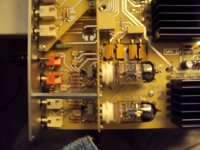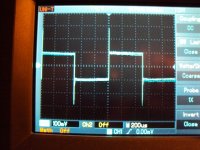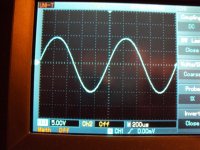MC Head
Hi Joachim,
Are you talking about the ADA4898-1 opamp?
In that case I have to make it with the LSK389 cause I will only work with + 24 volt and not with +/_ 24 volt in my own RIAA.
But I'll try the new buffer with your RIAA though! I'll keep you posted.
Thanks again.
Regards,
José
Audiofanatic
Hi Joachim,
Are you talking about the ADA4898-1 opamp?
In that case I have to make it with the LSK389 cause I will only work with + 24 volt and not with +/_ 24 volt in my own RIAA.
But I'll try the new buffer with your RIAA though! I'll keep you posted.
Thanks again.
Regards,
José
Audiofanatic
Here is a collection of the JG-Self circuits with all the recent changes i made.
In my version i do not use servos. In the Balanced INA input it is not neccessasy. I measured only 2.5mV at the output with cartridge connected.
I trim DC in the linestage with P2. Alternatively you could substitude P2 with fixed resistors and let the servo do the work or you could trim with P2 and use an aditional servo like in the schematic i show.
In my version i do not use servos. In the Balanced INA input it is not neccessasy. I measured only 2.5mV at the output with cartridge connected.
I trim DC in the linestage with P2. Alternatively you could substitude P2 with fixed resistors and let the servo do the work or you could trim with P2 and use an aditional servo like in the schematic i show.
Attachments
Self
Hi Joachim,
This is nice indeed, being a guy with so much talent it's almost impossible to think that you're not going to use a Self main amp
The one you're using now is probably the Berendsen?
I wonder how this whole set will perform on a set of ESL's
I can't wait for my OPAmp's to come in so I can start building this master piece of yours.
Again thanks for sharing it with us.
I'll do my best to finish mine asap.
Tjuus,
José
Audiofanatic
Hi Joachim,
This is nice indeed, being a guy with so much talent it's almost impossible to think that you're not going to use a Self main amp
The one you're using now is probably the Berendsen?
I wonder how this whole set will perform on a set of ESL's
I can't wait for my OPAmp's to come in so I can start building this master piece of yours.
Again thanks for sharing it with us.
I'll do my best to finish mine asap.
Tjuus,
José
Audiofanatic
That sounds good. Well, the Berendsen is only intermediate but it works suprisingly well on my hign sensitivity MPL. It´s shunt feedback and has a lot of class a so it may not leave class a on my speakers. Actually i am working on several solutions. One is a class A with Fet, one is Jan Diddens Pax and one amp gets build by Brianco. It´s a SUSY balanced design with hingh power Opamps. In the factory is a Camebridge Azur poweramp designed by Self with Class XD so i have no desire to build one myself. It sounds excellent and is not expensive. Of cause i am studying what Self is doing. I am just reading his new book : "Audio Power Amplifier Design Handbook". I like his clear and pragmatic style very much but as you have seen in my redesign of his preamp i prefer DC coupling whenever safely posible and do other component choices. I am more of a high speed, wide bandwidth guy.
i am looking now for a simple amp that needs not more then 10W. I have 96dB / 8 Ohm sensitive speakers in an open baffle so sensitivity in praxis of a pair is around 100dB. when i measure 5V on the speaker, talkig without jelling is imposible and when i measure more then 7V my ears start to hurt.
Maybe i do the Class A Fet.
i am looking now for a simple amp that needs not more then 10W. I have 96dB / 8 Ohm sensitive speakers in an open baffle so sensitivity in praxis of a pair is around 100dB. when i measure 5V on the speaker, talkig without jelling is imposible and when i measure more then 7V my ears start to hurt.
Maybe i do the Class A Fet.
Attachments
i am looking now for a simple amp that needs not more then 10W. I have 96dB / 8 Ohm sensitive speakers in an open baffle so sensitivity in praxis of a pair is around 100dB. when i measure 5V on the speaker, talkig without jelling is imposible and when i measure more then 7V my ears start to hurt.
Maybe i do the Class A Fet.
Maybe you should try simple chipamp based on LM1875 (like 47 Labs Shigaraki) or TDA2050? Some prefer them over famous LM3875.
You can use simple split supply or even +/- 12V battery supply. These amps sounds excellent with wideband drivers and some says they are even better than Pass constructions. There is a lot of opinions here.
There is another option: experiments with single supply car chips. Look here:
The Altmann BYOB amplifier
My friends tried TDA1554 and mono TDA1516 and like them better than LM3875 with premium parts.
But "de gustibus non est disputandum"
Best regards,
a_men
Thanks for this sugestions but i have tryed chipamps in the past and they did not sound the way i like it. I had a long discussion on the phone with Altmann and he certainly has interesting ideas. Anyway, my search is not over and ideally i whould like to build something where i have more design input then just optimising an application.
Do not take me wrong, gainclones can sound very good but i visited the designer of the 47 Labs many years ago in Japan and it is simply not the adventure i am seaking.
Do not take me wrong, gainclones can sound very good but i visited the designer of the 47 Labs many years ago in Japan and it is simply not the adventure i am seaking.
Chip Amp
Joachim,
You are speaking my language
Audiofanatic
Thanks for this sugestions but i have tryed chipamps in the past and they did not sound the way i like it. I had a long discussion on the phone with Altmann and he certainly has interesting ideas. Anyway, my search is not over and ideally i whould like to build something where i have more design input then just optimising an application.
Do not take me wrong, gainclones can sound very good but i visited the designer of the 47 Labs many years ago in Japan and it is simply not the adventure i am seaking.
Joachim,
You are speaking my language
Audiofanatic
Did you both manage to keep the appointment? Any News? (Yes, i'm nosy  )
)
Regards
difool
Regards
difool
Allen Wright of Vacuum State will visit me on sunday. He brings some tube equipment, so this will be interseting to compare with what i have.
I met with Allen and Johanna yesterday and today. Yesterday night we listened to his diferential 300B monoblocks and later we put on his big Preamp. Allen listenes very soft so i will do more listen today.
We also set up his small preamp and the big Monoblocks with KT88 in the factory.
i will listen to this too.
I was very surpised how lightweight the 300B monoblocks are.
We also set up his small preamp and the big Monoblocks with KT88 in the factory.
i will listen to this too.
I was very surpised how lightweight the 300B monoblocks are.
Tube Mono's
Hi Joachim,
Now I'm wondering if you fell in love with the tube sound or not!
If you where grabbed by the timbre of the sound, than I think you should consider building a SET Amp. I have a SET 845 for repair and modifications and when I'm done I'll let you know, perhaps you can visit me and find out if it's your cup of tea or not! Otherwise I'll see if I can drive to your place to compare it to your setup!
Cheers,
José
Audiofanatic
I met with Allen and Johanna yesterday and today. Yesterday night we listened to his diferential 300B monoblocks and later we put on his big Preamp. Allen listenes very soft so i will do more listen today.
We also set up his small preamp and the big Monoblocks with KT88 in the factory.
i will listen to this too.
I was very surpised how lightweight the 300B monoblocks are.
Hi Joachim,
Now I'm wondering if you fell in love with the tube sound or not!
If you where grabbed by the timbre of the sound, than I think you should consider building a SET Amp. I have a SET 845 for repair and modifications and when I'm done I'll let you know, perhaps you can visit me and find out if it's your cup of tea or not! Otherwise I'll see if I can drive to your place to compare it to your setup!
Cheers,
José
Audiofanatic
Actually i like tubes and have tube equipment. I simply do not design with tubes.
Let me only say so much that he sound of my JGSelf was not an ambarasment at all.
Mr. Wright was happy and surprised with my sound and was saying that i got the timbre right.
More to come when i find time to listen.
Let me only say so much that he sound of my JGSelf was not an ambarasment at all.
Mr. Wright was happy and surprised with my sound and was saying that i got the timbre right.
More to come when i find time to listen.
Today i made more listening tests to loading resistors.
One remark : I whould rate both resistors to be in he same quality class so the Dale is a huge bargain when you have the space to mount it. Some TX could be thrown in for good effect if you like a more "Matter of Fact" sound. For comparison of size i made a photo of the tested resistors side by side.
To simplify things, attached are some measurements of the Dale vs the Vishay. These are the "E" version, but the values requested were only available in the "C" version which has almost the same results as the "E", but I could not quickly find those.
Since these are just two sets of curves, I should mention these are very close, compare the pink curves. The dale has slightly more 2nd harmonic distortion. The 3rd harmonic tracks self heating due to signal level. At phono level I would expect this not be be an issue.
The observations are in line with the difference in 2nd harmonic distortion and lack of odd order distortions.
Of course "everyone" knows it is impossible to hear distortion at that level!
So this entire project really never happened!
Attachments
Actually i like tubes and have tube equipment. I simply do not design with tubes.
Let me only say so much that he sound of my JGSelf was not an ambarasment at all.
Mr. Wright was happy and surprised with my sound and was saying that i got the timbre right.
More to come when i find time to listen.
I'm waiting for your opinion about Mr. Wright diffrental amp.
I use 2a3 push-pull amp (Thorsten Loesch optimized this circuit) to drive my modified Visatons B200 in JeLabs style open baffles and I think this amp can be rewired in Allen Wright way.
OK
Thank you
I'll keep you posted!
Audiofanatic
P.S. whenever you like, visit me
Thank you
I'll keep you posted!
Audiofanatic
Thanks Simon. I trust my ears and your measurements, so no problem here.
I can of cause not explain exactly whats happening so the only "prove" whould be that somebody visits me and i play the resistors for him. We could do that sighted or not sighted. The guest can go out of the room when i change something ( or not) and then listen. Anyway, i am happy that you found a resistor that behaves well and does not cost a furtune.
I will listen tonight to Allens creations. I have also the small preamp at home now and i will maesure it. The big one is a little bit too big to put on my bench thogh.
I can of cause not explain exactly whats happening so the only "prove" whould be that somebody visits me and i play the resistors for him. We could do that sighted or not sighted. The guest can go out of the room when i change something ( or not) and then listen. Anyway, i am happy that you found a resistor that behaves well and does not cost a furtune.
I will listen tonight to Allens creations. I have also the small preamp at home now and i will maesure it. The big one is a little bit too big to put on my bench thogh.
Usually i use Dale CMF55-143 nonmagnetic from Schuro - Elektronik, Lautsprecherbau, High End-Audiotechnik
The first thing i did is making basic measuements on Allens small Pramp. It is beautifully made, inside and out. The phonostage that interests me most has a Fet ( 2SK10) - tube cascode. I spotted some very modern SMD caps. I asume they have a PPS dielectric.
See the photo of the phono input.
I measured RIAA precission with my RIAA encoder. The squarewave looks nicely square but has more overshot then the JG-Self. Allen implements the Neumann Pole, so i asume that comes from that. See the picture taken from the output of the line stage.
Maximum output voltage before clipping is + - 10V.
See the photo of the phono input.
I measured RIAA precission with my RIAA encoder. The squarewave looks nicely square but has more overshot then the JG-Self. Allen implements the Neumann Pole, so i asume that comes from that. See the picture taken from the output of the line stage.
Maximum output voltage before clipping is + - 10V.


